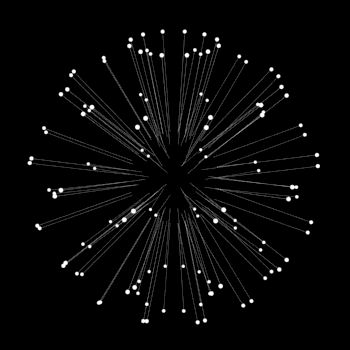Let's sort out your first rule: Its only zeros are #x=−5,−3,2#
For an equation to have the three zeros, it must only contain #(x+5), (x+3) and (x-2)#, the powers having no effect, since #0^x=0#.
The only equations fitting that rule are A, B, D, F, and G. C has an extra x which gives a zero at #x=0#, and G has different parts altogether.
It has y-intercept #y=5#
To find this, we must put #x=0# into the remaining equations, and from this we get:
A. #y=−5/60(0+5)(0+3)(0−2)^2=-5/60(5)(3)(-2)^2=--5#
B. #y=−5/90(0+5)(0+3)^2(0−2)=-5/90(5)(3)^2(-2)=5#
D. #y=−5/810(0+5)(0+3)^4(0−2)=-5/810(5)(3)^4(-2)=5#
F. #y=−5/30(0+5)(0+3)(0−2) = -5/30(5)(3)(-2)=5#
G. #y=−5/150(0+5)^2(0+3)(0−2) = -5/150(5)^2(3)(-2)=5#
The remaining equations are B, D, F and G.
Its long-run behavior is #y->oo# as #x->+-oo#
This an be worked out by looking at what happens to large negative and positive numbers.
For #y->oo# as #x->+-oo#, the equation must have an odd number of negative parts.
B. For very large positive numbers all parts will be positive, except #-5/90# will make it all negative, with very large negative numbers the #-5/90# will make it negative, #(x+5)(x+3)# and #(x-2)^2# will be positive (#"negative"*"negative"="positive"#)
D. For very large positive numbers, each part will be positive however the #-5/810# will make it all negative. For very large negative numbers, the parts #(x+5) and (x-2)#, #(x+3)^2 and (x+3)^2# will all be positive but the #-5/810# will make it negative.
F. For very large positive numbers, each part will be positive however the #-5/30# will make it all negative. However, for very large negative numbers the parts #-5/30 and (x+5)#, and #(x+3) and (x-2)# will both give positive and make #y->+oo# as #x_>-oo#
G. For very large positive numbers, each part will be positive however the #-5/150# will make it all negative. For very large negative numbers, the parts #(x+3) and (x-2)#, and #(x+5)^2# will make it positive, but the part #-5/150# will make it negative.
The equations left are B, D and G.

